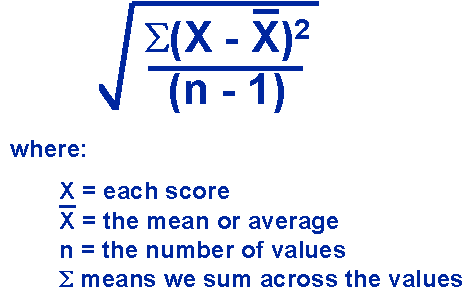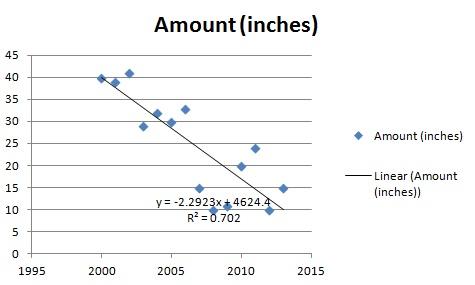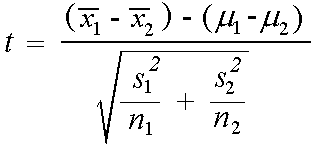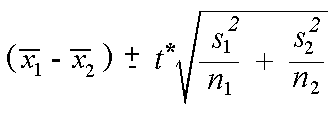Indices of the project
Quantitative strategies underscore target estimations, measurable, scientific, or numerical examination of information gathered through surveys, polls, studies, or by controlling previous information and utilizing computational procedures. Before outlining a quantitative research study, you should choose whether it would be descriptive or exploratory because this will direct how you accumulate, break down, and decipher the outcomes.
A descriptive study is administered by the accompanying tenets: subjects are for the most part measured once; the expectation is to build a relationship amongst the variables. Research analysis is more than calculating numbers and variables. However, data analysis is a movement that penetrates all phases of a study. Concerns with investigation ought to (1) start amid the configuration of a study, (2) proceed as point by point arrangements are made to gather information in various structures, (3) turn into the core interest of consideration after information are gathered, and (4) be finished just amid the report composing and evaluating stages.
The fundamental proposition of this paper is that fruitful data analysis, whether quantitative or subjective, requires
(a) Understanding an assortment of information investigation techniques
(b) Arranging information investigation ahead of schedule in a task and making updates in the arrangement as the work creates
(c) Understanding which strategies will best reply the study questions postured, given the information that has been gathered
(d) Once the examination is done, perceiving how shortcomings in the information or the examination influence the conclusions that can appropriately be drawn. The study questions represent the data analysis, obviously, the structure and nature of the information reveals that investigations can be performed. Consequently, the structure of the research questions creates inferences and recommendations. The researcher must consider information investigation at four crossroads:
- When the study is developed,
- When itemized arrangements are being made for information gathering,
- After the information are gathered, and
- As the report is explored
Research begins with no less than one inquiry concerning one marvel of interest. For instance, what capabilities may repress or improve the increase of women into senior authority positions (Carr 6)? On the other hand, what initiative elements may influence the maintenance decisions of enrolled attendants? Research inquiries, for example, the two going before inquiries, help researchers to center considerations, oversee endeavors, and pick the suitable methodology, or point of view from which to comprehend every wonder of interest (Cooper and Schindler 100).
The researcher foresees the kind of information expected to react to the research question. For example, is it numerical, textural or both numerical and textural information required? Taking into account this evaluation, the researcher chooses one of the three previously stated ways to deal with behavior research. Researchers commonly select the quantitative way to deal with research questions requiring numerical information. The subjective methodology for research questions requires textural information, while the mixed strategies approach for research questions requires both numerical and textural information.
Quantitative research has driven the need to measure information. By implication, quantitative research has ruled the western social as the research strategy to make meaning and new information. What constitutes a quantitative research strategy includes a numeric or factual way to deal with the research plan. Leedy and Ormrod affirmed that quantitative research is particular in its reviewing and experimentation, as it expands after existing hypotheses (190). The approach of a quantitative research keeps up the supposition of an empiricist worldview (Creswell 231).
The research itself is independent of the researcher. Subsequently, information is utilized to dispassionately gage reality. Quantitative research makes importance through objectivity revealed in the gathered information. Quantitative research can be utilized as a part of reacting to social inquiries of variables in the research. Quantitative researchers look for clarifications and expectations that will influence different persons and spots.
The purpose is to affirm, accept connections, and create speculations that add to the hypothesis. Quantitative research starts with an issue proclamation and includes the development of a theory, a writing survey, and a quantitative information examination. Creswell revealed that quantitative research utilizes procedures of request, for example, exploratory and overviews, and gathers information on foreordained instruments that yield information (60). Thus, discoveries of quantitative research can be prescient, logical, and affirming.
Variables
The researcher utilizes scientific models as the philosophy of information examination. Three chronicled patterns relating to quantitative research incorporate the research outline, test and estimation methodology, and factual investigation. Quantitative research additionally includes information gathering that is regularly numeric and the researcher tends to utilize scientific models as the procedure of information examination. In addition, the researcher utilizes request strategies to guarantee arrangement with information accumulation technique.
There are three wide characterizations of quantitative research: imaginative, trial and causal relative (Leedy and Ormrod 117). The imaginative research methodology is an essential research strategy that looks at the circumstance, as it exists in its flow state. The research includes recognizable proof of the qualities of a specific study in light of an observational premise, or the investigation of a connection between two or more marvels. Amid the test research, the researcher explores the treatment of mediation into the study gathering and measures the results of the treatment. There are three sorts of exploratory methodologies: pre-trial, genuine trial, and semi trial (Leedy and Ormrod 116).
The pre-test plan includes an independent variable that does not shift or a control gathering that is not randomly sampled. Leedy and Ormrod embraced the genuine trial plan, which gives a higher level of control in the analysis and produces a higher level of legitimacy (110). The genuine test plans result in a systemic way to deal with quantitative information gathering and numerical models in the investigations. However, the semi trial plan relies on non-random choice of study members. In this manner, control is restricted and genuine experimentation is unrealistic. Since the variable cannot be controlled, legitimacy might be yielded.
Independent and Dependent Variable
In the causal near research, the researcher analyzes how the independent variables re influenced by the dependent variables and includes circumstances and end results connections between the variables. The factorial configuration concentrates on two or more classes with the independent variables when contrasted with the dependent variable (Volt 98). The causal near research outline gives the researcher the chance to look at the collaboration between independent variables and their impact on dependent variables.
An independent variable that stands alone in the research study. For instance, somebody’s age may be an independent variable. Different components, (for example, what they eat, the amount they go to class, the amount of movies they watch) would change a man’s age. When searching for some sort of relationship between variables you are attempting to check whether the independent variable causes some sort of progress in alternate variables, or dependent variables. A dependent variable relies on different variables.
For instance, a test score could be a dependent variable since it could change based on a few elements. For example, the amount of learning time, the amount of rest you got the prior night you took the test or even how hungry you were the point at which you took the test could alter the test results. When searching for a relationship between two things you are attempting to discover what influences the dependent variable.
Descriptive statistics
Descriptive statistics are utilized to portray the essential elements of information in a study. They give basic rundowns of the example and the measures. Together with basic design investigation, they shape the premise of intents and purpose in a quantitative examination of information. With descriptive statistics, you are portraying what is or what the information appears.
With inferential statistics, you are attempting to achieve conclusions that broaden the information. Thus, we utilize inferential statistics to deduce from the example information what the populace may think. On the other hand, we utilize inferential statistics to make judgments about the likelihood that a study may have happened by chance. In this manner, we utilize inferential statistics to infer information to more broad conditions. However, we utilize descriptive statistics to depict what is happening with the research sample. Descriptive statistics are utilized to exhibit quantitative depictions in a reasonable structure.
In descriptive statistics, the central tendency is an evaluation of the “middle” of a conveyance of qualities (Mingers 250). There are three noteworthy sorts of assessments of central tendency, which includes mean, median, and mode.
Mean
The mean portrays the focal inclination of the sample population. To process the mean, the research must include the qualities and separation by the quantity of qualities. For instance, the mean or normal test score is dictated by summing all the scores by the quantity of students taking the exam. For instance, consider the test score values 15, 20, 21, 20, 36, 15, 25, 15. The entirety of these 8 qualities is 167, so the mean is 167/8 = 20.875.
Standard Deviation
The standard deviation is an assessment of dispersion based on the anomaly for the research. The standard deviation demonstrates the connection that the arrangement of scores has the mean of the specimen. For example, consider the arrangement of scores 15,20,21,20,36,15,25,15. To process the standard deviation, we first discover the separation between every worth and the mean. We know that the mean is 20.875.
Thus, standard deviation =

The scattered plot and correlation coefficient
Scattered plots are like line charts because they utilize flat and vertical points to plot its graph. A scattered plot demonstrates the influence of one variable on another point. Thus, the correlation between two points describes its scattered plot. Scattered plots comprise an expansive assortment of information. If the data points make a straight line going from the beginning to high x-and y-values, then the variables have a positive relationship. However, if the line goes from a high-esteem on the y-pivot down to a high-esteem on the x-hub, the variables have a negative correlation.
The correlation coefficient is a measure of the straight relationship between two variables X and Y, giving a quality amongst +1 and −1.
The assumptions= Where 1 is a completely positive correlation
0 = no correlation
−1= absolute negative correlation
Thus, the correlation coefficient is utilized as a part of the science as a measure of the level of straight reliance between two variables.
Inferential statistics. Inferential statistics are procedures that permit us to utilize specimens to make speculations about the populace from which the examples were drawn. The procedure for accomplishing this is called inspecting (testing techniques are examined in subtle element). The techniques of inferential statistics are (1) the estimation of parameters and (2) testing of factual speculations.
Regression equation
A regression equation is utilized to discover what relationship, assuming any, exists between sets of information. For instance, to quantify a kid’s height, you may find that they develop around 3 creeps a year. That pattern (growing three creeps a year) can be displayed with a regression equation. Thus, most things (from gas costs to sea tempests) can be displayed with some sort of equation, which permits us to foresee future occasions.
A regression line is the “best fit” line for your information. You fundamentally draw a line that best displays the information. Regression equations can help ascertain the line of ‘best fit’. Thus, regression equation supports data forecast, either future expectations or signs of past conduct. For instance, you might need to recognize what your reserve funds will be worth using regression analysis. Alternately, regression analysis can ascertain the time needed to recoup from a disease.

To test the significance of two unknown means, we will use the formula below

However, the confidence interval of the population means

2-Sample-t describes the confidence interval and supports the hypothesis test when standard deviations are obscure and tests are drawn independently from each other. This methodology depends on the t-appropriation, and for little specimens it works best if the information were drawn from dispersions that are typical or near ordinary.
You can have expanded trust in the outcomes as the specimen sizes increases. To do a 2-test hypothesis test, the two samples must be independent and the perceptions of the primary specimen must not have any bearing on the perceptions of the second example. For instance, test scores of two separate samples of understudies are independent, yet the estimations of the sample of understudies are dependent. The 2-test hypotheses test functions are admirably when the suspicion of typicality is disregarded, and the hidden appropriation is not exceptionally skewed. With non-normal and profoundly skewed circulations, it may be more suitable to utilize a nonparametric test.
Conclusions
Quantitative and subjective research techniques examine and investigate the diverse cases of information and both strategies are intended to address a particular sort of research inquiry. While the quantitative technique gives a target measure of reality, the subjective strategy permits the researcher to investigate and comprehend the unpredictability of a marvel. This paper displayed an explanation of what constitutes a quantitative analysis and outlined strategies used to direct studies for both research approaches.
Works Cited
Carr, Linda. “The Strengths and Weaknesses of Quantitative and Qualitative Research: What Method for Nursing?” Journal of Advanced Nursing 20.4 (2010): 716-721.Print.
Cooper, Donald, and P. Schindler. Business Research Methods. New York, USA: McGrew-Hill Companies, 2001. Print.
Creswell, John. Research Design: Qualitative, Quantitative and Mixed Methods Approaches. 2nd ed. Thousand Oaks, CA: SAGE Publications, 2003. Print.
Leedy, Paul, and J. Ormrod. Practical Research: Planning and Design. 7th ed. Upper Saddle River, NJ: Merrill Prentice Hall. Thousand Oaks: SAGE Publications, 2001. Print.
Mingers, John. “Combining IS Research Methods: Towards a Pluralist Methodology.” Information Systems Research 23.9 (2012): 240-259. Print.
Volt, Paul. Dictionary of Statistics and Methodology: A Nontechnical Guide for the Social Sciences. 2nd ed. Thousand Oaks, CA: SAGE Publications, 1999. Print.